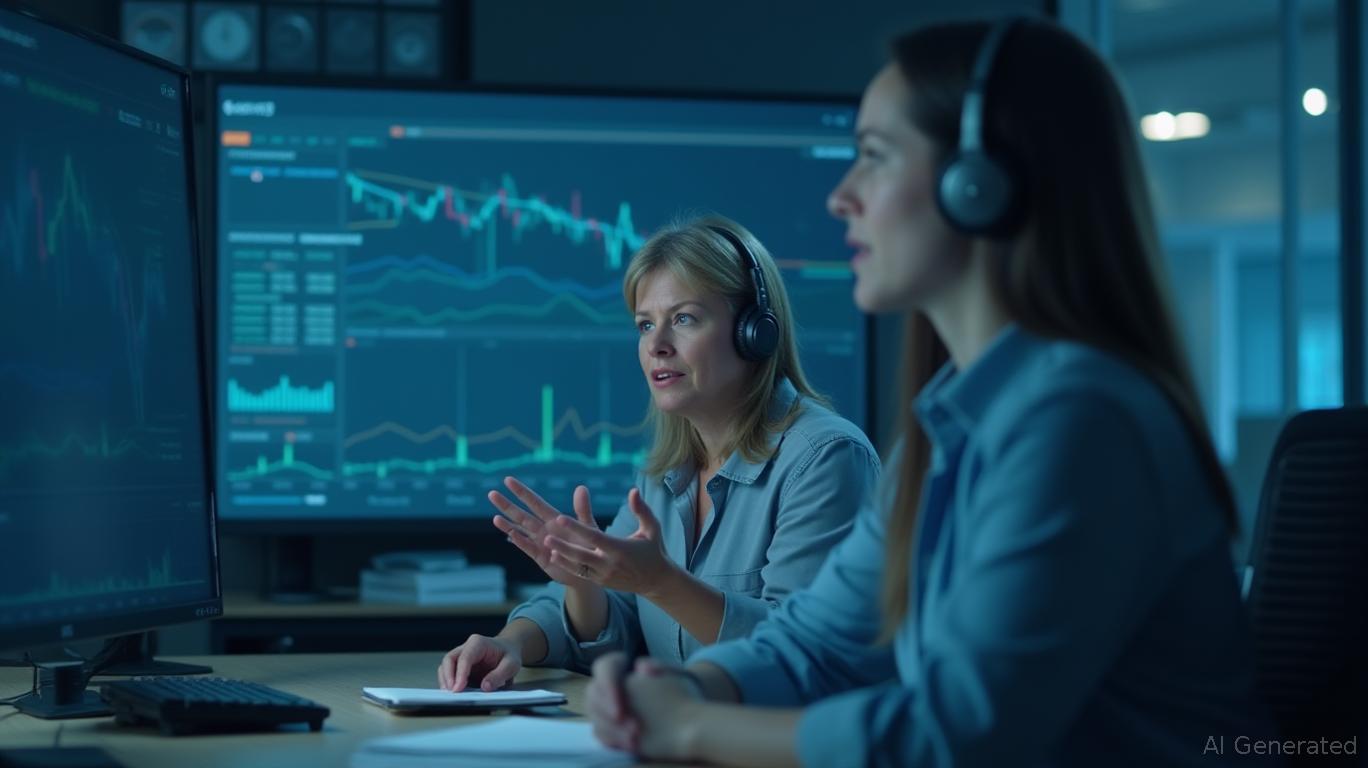Why Active Stock Pickers Thrive Alongside AI in the Post-DeepSeek World
The rise of DeepSeek's AI models has reshaped the investment landscape, challenging the dominance of traditional sectors and forcing a reevaluation of active management. Yet, far from signaling the end of human expertise, this era underscores the value of a symbiotic partnership between AI-driven analytics and the intuitive judgment of active stock pickers. Here's how the two can coexist—and why it's critical for investors to embrace this hybrid approach.
The Post-DeepSeek Paradox: Efficiency Meets Complexity
DeepSeek's breakthroughs, particularly its R1 model, have slashed costs for training AI systems while democratizing access to advanced technology. A single training run for R1 cost just $5.6 million——a stark contrast to the $55 million required for Meta's Llama. This efficiency has upended sectors like semiconductors and data centers, where overinvestment in GPU-heavy infrastructure now faces skepticism.
But here lies the paradox: while AI tools excel at processing vast datasets, identifying patterns, and optimizing portfolios, they lack the human capacity for strategic judgment, ethical reasoning, and adaptability. Active managers, armed with AI's analytical power, can now focus on higher-order tasks:
1. AI as the “Engine” — Humans as the “Driver”
AI's Strength:
- Data Processing: Algorithms can analyze earnings calls, sentiment trends, and macroeconomic indicators faster than any human.
- Cost Efficiency: Tools like DeepSeek's R1 model reduce the need for brute-force capital expenditures, enabling investors to reallocate resources to high-impact areas.
Human's Edge:
- Strategic Vision: Deciding where to allocate capital amid shifting markets requires understanding geopolitical risks, regulatory shifts, and cultural nuances. For example, while AI might flag a stock's declining trading volume, a human could contextualize this within broader industry trends.
- Ethical Judgment: AI may recommend a stock based purely on financial metrics, but active managers must weigh factors like data privacy concerns or ESG compliance.
Example:
Consider Snowflake, a cloud data platform that has outperformed legacy software firms. —its success isn't just due to its AI-integrated tools but also its ability to navigate regulatory environments and build partnerships in sectors like healthcare and finance. Active managers, using AI to identify trends, can then assess the human elements driving such opportunities.
2. The Threat of Passive Investing—and Why Active Managers Can Still Win
Passive investing, long a competitor to active management, faces its own challenges in the Post-DeepSeek era. Index funds tied to sectors like semiconductors or data centers have stumbled as efficiency gains reduce their growth potential. Meanwhile, active managers leveraging AI can:
- Target Undervalued Sectors: Shift focus to software integrators (e.g., Salesforce, Microsoft) and productivity tools (e.g., Shopify) that benefit from AI's democratization.
- Avoid Overcrowded Trades: AI tools can highlight overbought stocks, allowing managers to pivot to underappreciated companies.
The Stanford Study's Cautionary Note:
While an AI tool outperformed 93% of human managers in a 30-year backtest, its edge erodes if widely adopted. Active managers must thus differentiate through creativity, such as identifying niche applications of AI in sectors like healthcare (e.g., Intuitive Surgical's robotic systems) or autonomous vehicles.
3. Navigating the New Value Chain: Where to Focus
The Post-DeepSeek era has redefined the AI value chain, shifting emphasis from hardware (Phase 1–3) to software and applications (Phase 4). Active managers should prioritize:
Software and Productivity Plays
- Snowflake, Databricks, and Palantir are building AI-driven platforms for businesses. These firms leverage AI to reduce operational costs while offering scalable solutions.
Global Innovation Hubs
- Asia's Tech Ecosystem: Companies like Tencent and Samsung are optimizing AI models for cost-sensitive markets, offering growth opportunities beyond U.S.-centric portfolios.
Ethical and Regulated Sectors
- Healthcare AI: Firms like Tempus (precision medicine) or Arterys (imaging analytics) require human oversight to navigate FDA approvals and patient trust.

Investment Strategy: Balance, Agility, and Human Insight
To thrive, investors should adopt a hybrid portfolio:
1. AI-Enhanced Tools: Use robo-advisors or algorithmic platforms for routine rebalancing and risk management.
2. Active Allocation: Reserve 30–40% of capital for sectors requiring human judgment, such as emerging AI applications in energy or defense.
3. Monitor CapEx Trends: Track hyperscalers like Microsoft and Meta for signals on infrastructure spending—****—while avoiding pure-play semiconductor stocks unless they diversify into software.
Conclusion: The Future Belongs to the Hybrid Investor
The Post-DeepSeek era isn't about AI versus humans—it's about AI with humans. Active managers who integrate AI's analytical prowess while retaining strategic autonomy will outperform those clinging to old methods. As DeepSeek's model shows, efficiency alone isn't enough; it's the combination of machine precision and human intuition that unlocks true alpha.
For investors, the path forward is clear: embrace AI as a tool, not a replacement, and prioritize sectors where creativity meets computation. The best portfolios will be those that balance the cold logic of algorithms with the warm wisdom of human insight.
Final Note: The next decade will reward investors who see AI not as a competitor but as a collaborator—one that frees them to focus on what truly matters: deciding where to aim, not just how to compute.

Comments
No comments yet